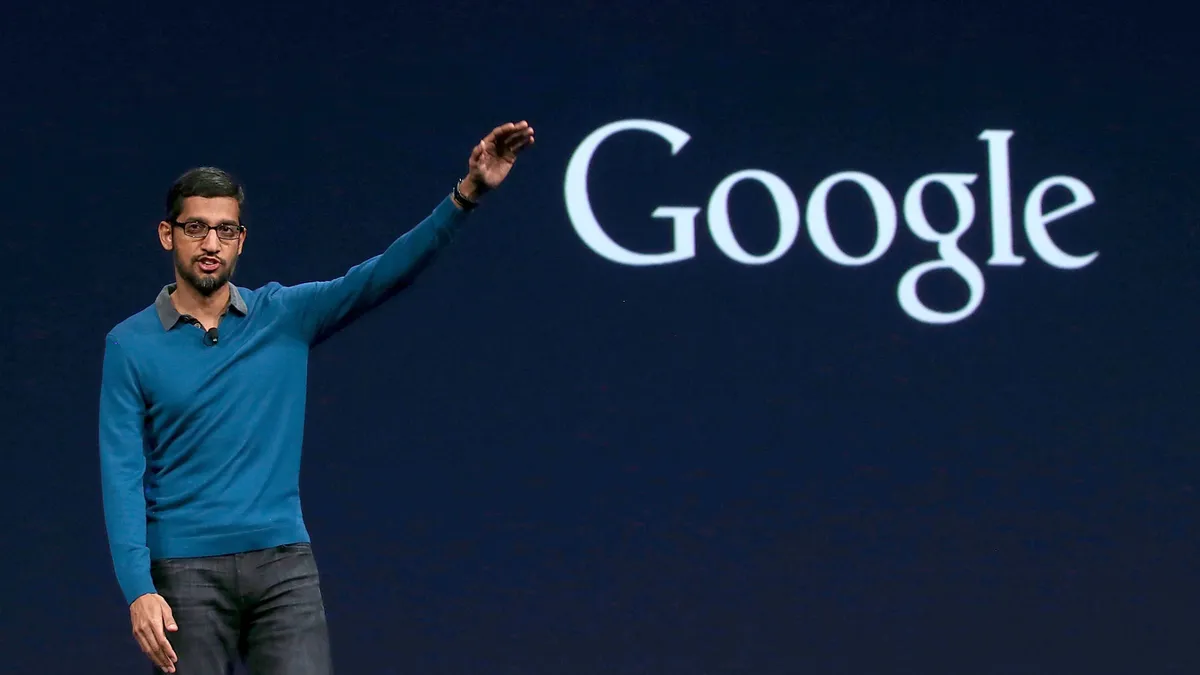Dive Brief:
- Google's revenue derived from advertising sales increased 33% year-on-year in the fourth quarter to $61.24 billion, buoyed by traction for its bets in commerce around the holidays, according to an earnings release from parent company Alphabet. Total services revenue for the period hit $75.3 billion, a 32% YoY gain.
- "Search & other," the largest segment of Google's ads breakout, jumped 36% YoY to $43.3 billion, while YouTube notched 25% YoY growth to $8.6 billion. The commerce opportunity on the video platform "remains really exciting," Google Chief Business Officer Philipp Schindler told analysts on a call discussing the results.
- Looking ahead, the tech giant is planning to phase out third-party cookies in its Chrome web browser sometime in 2023. It recently revealed a replacement for the widely popular ad-targeting technology called Topics, which Schindler said should be available for testing by the end of the first quarter.
Dive Insight:
A concentrated push to round out commerce and omnichannel capabilities continued to pay off for Google during the key holiday window, when brands had to contend with intense supply chain pressures and the surging omicron variant of COVID-19. Retail was "by far" the largest contributor to ads growth in Q4, CBO Schindler said, with finance, media and entertainment and travel also delivering robust demand. The number of merchants applying Google's promotional features spiked 280% YoY over the period.
Moving forward, Google is angling to integrate shopping into more facets of its product portfolio. YouTube livestreaming was one area called out in the analyst call. Samsung, Verizon and Walmart hosted shoppable livestreams in partnership with creators in the U.S. to promote holiday deals in Q4.
YouTube Shorts, the video service's TikTok lookalike, now draws 15 billion views each day, and could soon take a bigger crack at the commerce space. Alphabet CEO Sundar Pichai said the short-form offering is in the "super early" testing phase when it comes to shopping. TikTok has quickly ramped up its own commerce bets as it vies to create a stronger link between its influential creator community and sales.
YouTube's advertising growth rate actually decelerated in Q4 and missed analyst expectations — an outlier in an otherwise blowout period. Google CFO Ruth Porat suggested some slowdown occurred because Q4 2020 marked a recovery period after brands cut spending in the early days of the pandemic that the company is now lapping.
Executives reinforced the health of the YouTube creator economy as the war for online talent gets more competitive. Beyond the mounting threat of TikTok — the ByteDance-owned app last year dethroned Google as the most-visited website — Facebook has established a creator fund to attract more influencers, while Snapchat has doled out hefty paydays to people who post on features like Spotlight, its own TikTok copycat. Shorts has a similar incentive program, which is now available in more than 100 countries. The number of YouTube channels that generate at least $10,000 in revenue was up more than 40% YoY, Pichai said on the call.
Narrowing in on creators and direct response advertising formats could help gird Google against potential disruptions stemming from its decision to deprecate third-party cookies. The move, which the search giant claims is intended to safeguard user privacy, is expected to deliver a blow to campaign performance for marketers that have long relied on the ad-targeting tactic. The initial plan to phase out cookies was delayed by a year to 2023, while Google recently axed an intended replacement, called Federated Learning of Cohorts, in favor of its new Topics initiative.
"[The] Topics API will allow advertisers to show relevant ads to people based on their interest inferred from the website they visit all in a more private way for users," Schindler said in a response to analyst question about the project, adding it was too early to share more details relevant to an advertiser's perspective.















